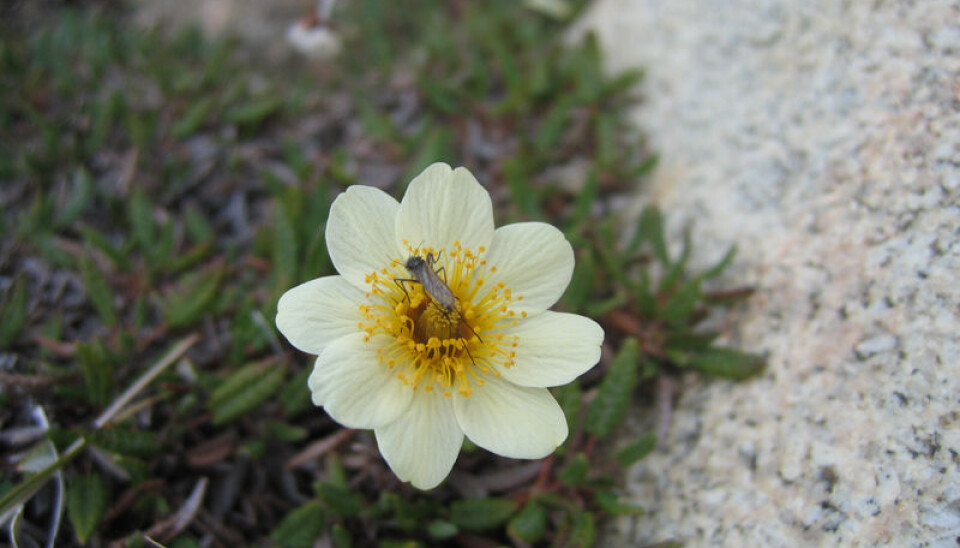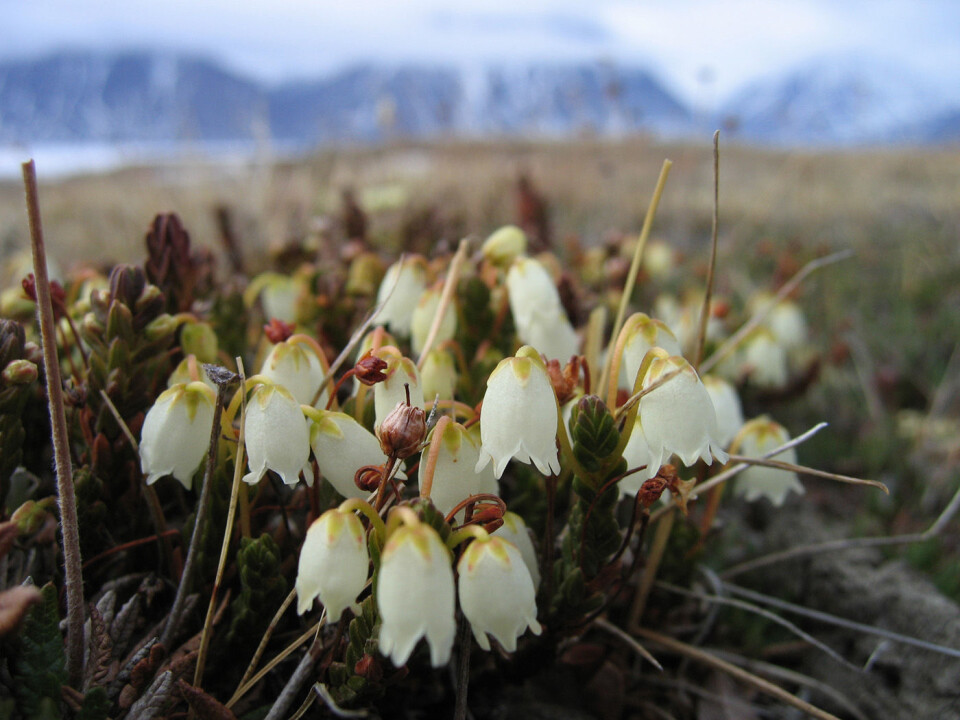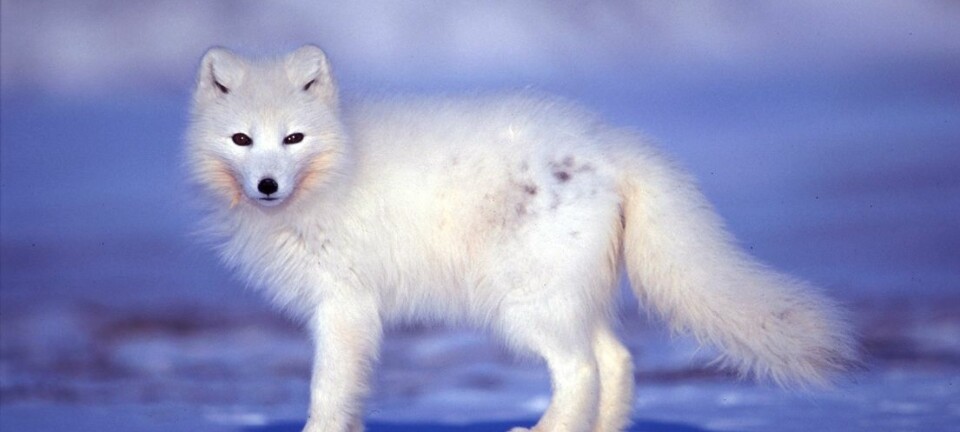
Climate change eats up Arctic insect life
Scientists have found the first clear link between insect populations and rising temperatures in the Arctic.
The rising temperatures in the Arctic affect both insects and flowers, and that may have long-term implications for other species.
After only 14 years, the number of insects in an area in Northeast Greenland was halved. The warm climate caused the flowers to senesce faster, leaving the insects with less time to find nectar.
So concludes a new research project, headed by biologist Toke Thomas Høye of Aarhus University’s Department of Bioscience – Arctic Research Centre. The study is published in the journal Nature Climate Change.
“This is the first discovery to show that climate change can have effects that ripple through the food chain all the way to the insects. This may turn out to be the most serious and dominating effect of the rising temperatures,” says Høye.
Shorter flowering season

In the period 1996-2009, he and his colleagues monitored six plant species and two families of insects around the Zackenberg research station in Northeast Greenland. Flies and midges are the primary flower visitors, feeding on nectar from the six plants, including mountain avens.
Having simply calculated the number of flowers and insects caught in pitfall traps, they counted around 150,000 insects.
“This is hardly rocket science – it’s good, old-fashioned biology work where we use a click counter and a notepad,” says Høye.
The researchers observed that the populations of flies and midges declined over the 14-year period and were particularly scarce following a very short flowering period the previous year.

”There appeared to be a correlation between the duration of the flowering season one year and the insect population the following year,” he says. “After the most extreme years with the shortest flowering seasons we only observed half of the animals that we used to see there.”
The heat is the most likely culprit
Since the monitoring began, the area has become 2.5 degrees warmer on average, and that is a very dramatic increase in temperature.
In the Arctic, the timing between insects and plants is crucial because the flowering occurs during a brief period. During the warmest years the flowers senesced faster and in a more synchronous way, leaving the insects with less time to visit them and get nourishment to ensure the survival of the population for the following year.
The disruptions in the flowering are probably a consequence of the temperature change, the study concludes:
“We cannot say with certainty that this is related to temperature, but the correlation is very strong,” says Høye.
The team compared variations in temperature with variations in the duration of the flowering season to find out how the various plants are affected by temperature changes.
Ripple effect
It is possible that flowers and insects were affected by the same change independently of one another, but according to Høye, the analysis suggests that the decline in the insect population is more likely to be a result of the shorter flowering periods.
”Climate change affects one link in a food chain, which thus affects another link in a food chain,” he says, referring to an effect known as ’trophic cascade’.
The study did not cover this effect, nor did it specify which insect species face the greatest risk.
”We’re assuming that there are some rare insects among the two families we have counted. If these insects come out late in the spring, it can be critical if there is no flowers to be found.”
----------------------
Read the Danish version of this article at videnskab.dk
Translated by: Dann Vinther







